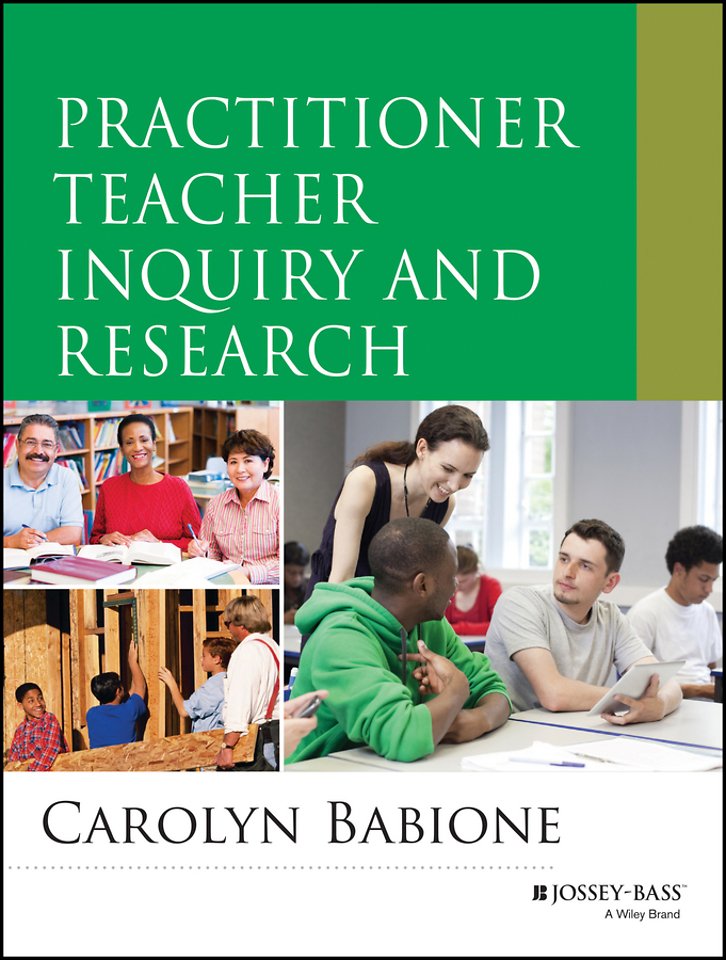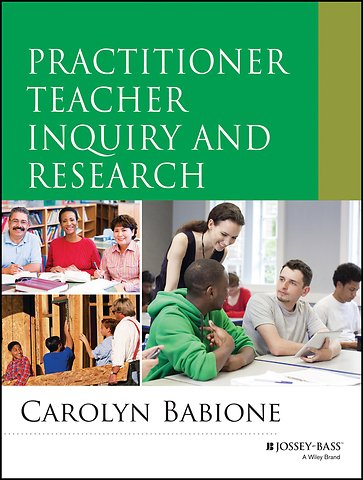Practitioner Teacher Inquiry and Research
Samenvatting
Teacher inquiry helps improve educational outcomes
Practitioner Teacher Inquiry and Research explores the concept and importance of the teacher practitioner, and prepares students in teacher education courses and programs to conduct research in the classroom. Author Carolyn Babione has extensive experience in undergraduate– and graduate–level teacher training and teacher inquiry coursework. In the book, Babione guides students through the background, theory, and strategy required to successfully conduct classroom research. The first part of the book tackles the "how–to" and "why" of teacher inquiry, while the second part provides students with real–life practitioner inquiry research projects across a range of school settings, content areas, and teaching strategies. The book′s discussion includes topics such as:
Underlying cultural and historical perspectives surrounding the teaching profession
Hidden stereotypes that limit teacher beliefs about power and voice
Current curriculum innovation and reflections on modern developments
Practitioner Teacher Inquiry and Research successfully guides and encourages budding teachers to fully understand the importance of their involvement in studying and researching their classroom settings, giving a better understanding of how their beliefs and teaching practices impact classroom learning.
Specificaties
Inhoudsopgave
<p>Preface ix</p>
<p>Acknowledgments xix</p>
<p>The Author xx</p>
<p>The Contributors xxi</p>
<p>Part 1: Perspectives, Strategies, and Methodologies 1</p>
<p>Chapter 1 Developing a Concept of Practitioner Teacher Inquiry 3</p>
<p>How to Define Research 3</p>
<p>Complexities for Developing Inquiry Identity 10</p>
<p>Summary 19</p>
<p>Discussion Questions 21</p>
<p>Chapter 2 School Change and Teacher Inquiry Identity 29</p>
<p>Postmodern Schooling 29</p>
<p>Crafting Inquiry Possibilities for Improving Schools 37</p>
<p>Summary 46</p>
<p>Discussion Questions 49</p>
<p>Chapter 3 Inquiry Communities for Learning and Change 55</p>
<p>Educators as Inquirers 55</p>
<p>Collaborative Youth Inquiry 61</p>
<p>Inquiry Action Studies 66</p>
<p>Summary 74</p>
<p>Discussion Questions 75</p>
<p>Chapter 4 Where We Begin Practitioner Teacher Inquiry 81</p>
<p>Finding a Focus 82</p>
<p>Seeking Expertise from Others 91</p>
<p>Summary 99</p>
<p>Discussion Questions 100</p>
<p>Chapter 5 Guidelines for Collecting Data 107</p>
<p>Ethical Issues, Choices, and Challenges 107</p>
<p>Data Collection 119</p>
<p>Summary 132</p>
<p>Discussion Questions 133</p>
<p>Chapter 6 Analyzing, Interpreting, and Managing Inquiry Study 139</p>
<p>Data Analysis and Interpretation 139</p>
<p>Managing the Study 150</p>
<p>Summary 162</p>
<p>Discussion Questions 163</p>
<p>Chapter 7 Sharing and Changing School Culture 167</p>
<p>Communicating New Knowledge and Understandings 167</p>
<p>Collective Thinking and Decision Making 183</p>
<p>Summary 191</p>
<p>Discussion Questions 193</p>
<p>Part 2: Teacher Inquiry into Practice 199</p>
<p>Chapter 8 Blogging in the LA Classroom: How Do We Do It Better? 201<br /> <br /> Kathy Anderkin</p>
<p>Context 201</p>
<p>School and Community Description 202</p>
<p>Problem Statement 203</p>
<p>Literature Review 204</p>
<p>Design 204</p>
<p>Data Analysis 207</p>
<p>Conclusion 209</p>
<p>Discussion Questions 210</p>
<p>Chapter 9 Struggles and Successes of Problem–Based Learning 213</p>
<p>Angela Durbin Page</p>
<p>Problem Statement 213</p>
<p>Theoretical Framework 215</p>
<p>Study Overview 218</p>
<p>Effective Strategies for Project–Based Learning Experiences 220</p>
<p>Conclusion 222</p>
<p>Discussion Questions 222</p>
<p>Chapter 10 Teaching Social Skills with Picture Books 225</p>
<p>Brandon La Mar</p>
<p>Problem Statement 226</p>
<p>Literature Review 227</p>
<p>Design 229</p>
<p>Data Analysis 233</p>
<p>Conclusion 235</p>
<p>Discussion Questions 236</p>
<p>Chapter 11 Increasing Readership of Online Student Publications 239</p>
<p>James E Lang</p>
<p>Context 239</p>
<p>Description of Study 240</p>
<p>Assessment and Analysis 243</p>
<p>Conclusion 246</p>
<p>Discussion Questions 247</p>
<p>Chapter 12 One–to–One iPad Initiative Review 249</p>
<p>Mark Lorence</p>
<p>Problem Statement 249</p>
<p>Literature Review 250</p>
<p>Research Design 254</p>
<p>Data Analysis 255</p>
<p>Conclusion 260</p>
<p>Discussion Questions 264</p>
<p>Chapter 13 The Vegas Effect: A Personal Reflection on the Obstacles to Doing Education Research 265<br /> Melissa Rhinehart</p>
<p>Obstacle Set 1 265</p>
<p>Obstacle Set 2 266</p>
<p>Research Aspirations 266</p>
<p>Obstacle Set 3 267</p>
<p>Conclusion 268</p>
<p>Discussion Questions 270</p>
<p>Chapter 14 Transferring Oral Phonemic Skills to Written Form 271<br /> Resjohna Tomblin</p>
<p>Problem Statement 271</p>
<p>Literature Review 272</p>
<p>Research Design 275</p>
<p>Data Analysis 277</p>
<p>Conclusion 279</p>
<p>Discussion Questions 282</p>
<p>Chapter 15 Connecting Socially Through a Morning Meeting Approach 283<br /> Kayce Ware</p>
<p>Context 283</p>
<p>Conducting the Study 286</p>
<p>Findings and Results 287</p>
<p>Conclusion 291</p>
<p>Discussion Questions 293</p>
<p>Glossary 295</p>
<p>Index 300</p>
<p>Credits 314</p>
Net verschenen
Rubrieken
- aanbestedingsrecht
- aansprakelijkheids- en verzekeringsrecht
- accountancy
- algemeen juridisch
- arbeidsrecht
- bank- en effectenrecht
- bestuursrecht
- bouwrecht
- burgerlijk recht en procesrecht
- europees-internationaal recht
- fiscaal recht
- gezondheidsrecht
- insolventierecht
- intellectuele eigendom en ict-recht
- management
- mens en maatschappij
- milieu- en omgevingsrecht
- notarieel recht
- ondernemingsrecht
- pensioenrecht
- personen- en familierecht
- sociale zekerheidsrecht
- staatsrecht
- strafrecht en criminologie
- vastgoed- en huurrecht
- vreemdelingenrecht

